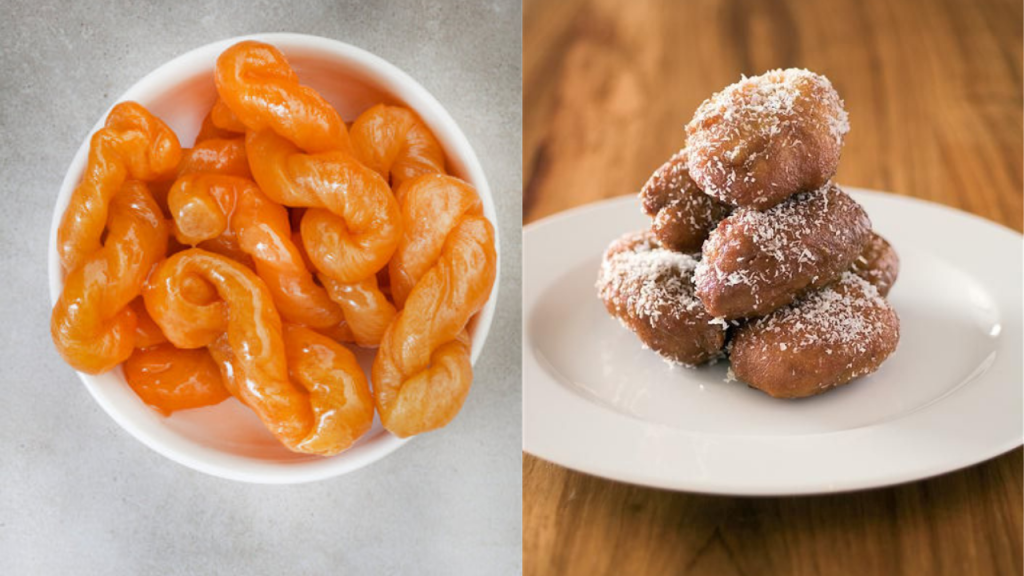South African cuisine boasts a rich tapestry of flavours, and two iconic treats that often grace the tables of households and gatherings are koesisters and koeksisters. While these delectable pastries may sound similar, they each hold unique differences in their tastes that make them cherished delicacies.
Koesisters: A sweet and spiced indulgence
Koesisters are a beloved Cape Malay delicacy, known for their delightful combination of sweetness and spiciness. These doughnut-like pastries are typically made using a fragrant spiced dough, which incorporates ingredients like cinnamon, aniseed, and cardamom. The dough is then shaped into small, round balls before being fried until golden brown. After frying, koesisters are traditionally rolled in desiccated coconut or drizzled with a sweet, sticky syrup.
They are often enjoyed as a breakfast treat, traditionally South Africans love to enjoy them on a Sunday morning, or as part of a light meal, accompanied by a steaming cup of tea or coffee. The combination of soft, slightly chewy texture and the blend of sweet and spiced flavours makes it a household favourite.
Koeksisters: A twist of sweetness and syrup
In contrast, koeksisters are a confectionery delight with a focus on pure sweetness. These treats originate from the Afrikaaner culinary tradition and are made by frying plaited dough strips until they are crispy and golden. Once fried, the koeksisters are immediately dipped into a cold, flavoured sugar syrup, which results in their signature glossy and sticky exterior.
The syrup used for koeksisters is typically infused with hints of lemon juice or ginger, adding a tangy undertone to the intense sweetness. The crispy exterior and syrup-soaked interior create a texture that is both satisfyingly crunchy and delightfully sweet. Koeksisters are often enjoyed as a dessert or a special treat, and their purely sweet nature sets them apart from their spiced koesister counterparts.
Make koeksisters: Koeksisters recipe
Let’s compare the differences
Flavour profile
- Koesisters: Known for their blend of sweetness and warm spices, creating a unique taste that’s both sweet and aromatic.
- Koeksisters: Centered on pure sweetness, often with a tangy undertone from the syrup.
Texture
- Koesisters: Soft, slightly chewy doughnut-like texture.
- Koeksisters: Crispy and crunchy exterior with a syrup-soaked, tender interior.
Origins:
- Koesisters: Cape Malay culinary tradition.
- Koeksisters: Afrikaaner culinary tradition.
Whether you find yourself savouring the warm embrace of a koesister’s spices or delighting in the saccharine satisfaction of a koeksister, these two pastries provide a glimpse into the rich culinary diversity that South Africa has to offer. They’re both delicious and whether you make them for others or enjoy them for yourself, the two are delicacies that will carry on for generations.
ALSO SEE: Cape Malay Koesisters, a flavour celebration
Written by Maegan-Leigh Jacobs
Feature image: Pexels/Pixabay

